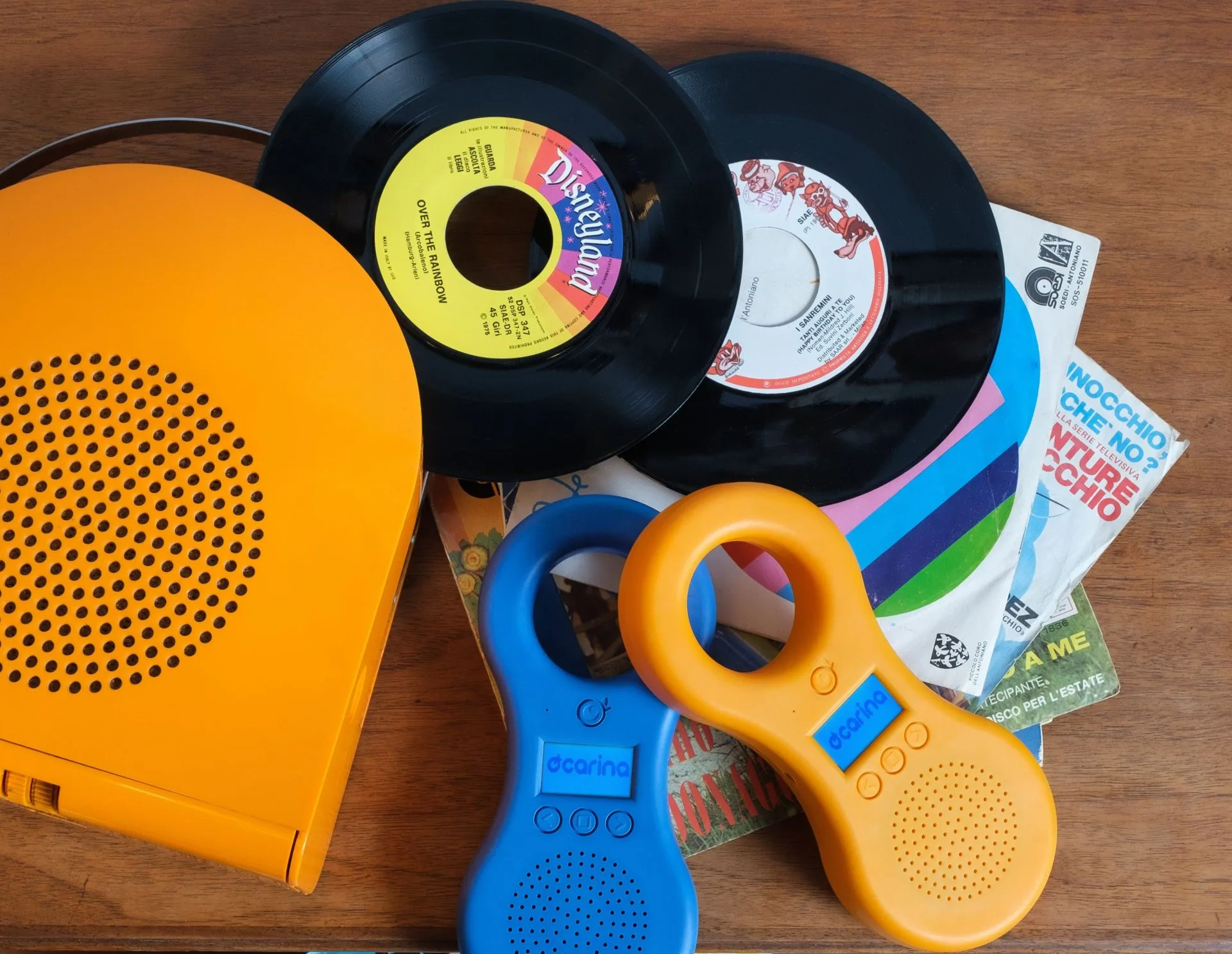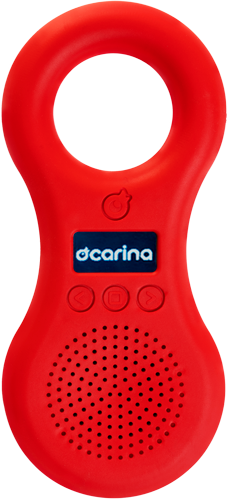Portable, round-shaped, colorful, many people will compare Ocarina to the contemporary version of the dear old record player of the 1970s. This comparison is very welcome to us, since we were frequent users of it as children.
For all the children and young people of those years, the record player was, in fact, a real revolution. Thanks to this device, an automatic portable record player, it was possible to listen to whatever you wanted. Inside were inserted 45 rpm records (i.e., vinyl with a diameter of 178 millimeters and a speed of 45 rpm) containing audio -fables, children’s ditties, the legendary cartoon soundtracks, but also albums by adult artists. Thus we went from “Fury Horse of the West” to cult songs such as Gabriella Ferri’s “Dove sta Zazà.” Musical education often started right from there…
The first model of record player can be traced back to Irradio, a company producing phonographic equipment founded in 1930 in Milan by Franco Corrado Bonifacini. After a trip to the United States, he wanted to invest part of the finances of the family business in the launch of audio reproduction devices. Thus in 1966 Irradio asked architect and designer Mario Bellini to design a portable record player that was versatile, durable, and innovative in shape, aimed primarily at teenagers, who were big consumers of records.
Bellini created an object never seen until then, which became a symbol for an entire generation. A compact box with a “mouth” that “ate” the record, automatically starting its playback. The sound came out of the built-in loudspeaker and the most incredible thing was that it ran on batteries so it could be carried anywhere. “The record eater plays always and in any case, hold it by the hand while walking or place it upright, sideways or upside down consistently; as soon as it has finished playing it spits out the record and is ready to start again”- Bellini explained.
The device was named Irradiette, a name, however, that was later changed to Fonorette.
Then, between 1975 and 1988, the famous Musicalsound Penny (also designed by Bellini) became popular, with a compact appearance with holes in the part above the speaker and an even wider choice of colors: orange, light blue, red, green, yellow. A pop, playful, cheerful line.
Then came the Minerva Pop 45, the Wilco (“Chicco,” “Coral,” “Pepito”), Geloso “Radiophonobox” …
However, the era of the record player was destined to fade away…soon in the early 1980s magnetic tape cassettes became more and more widely used both because they were more versatile and smaller in size and because of the countless recorders/players put on the market. It was the Sony walkman that consecrated their success until CDs and digital music relegated them to the background.
But this is where another story begins…








